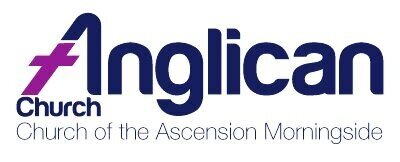A bell is rung to begin the service, the congregation stands, and the organ plays a processional for the entry of the Priest and assistants, from the door at the west end of the church. When they reach the sanctuary, they reverence the altar and commence their prayers of preparation to serve at the altar by making the sign of the Cross, and the prayers begin: I will go unto the altar of God. Even unto the God of my joy and gladness”. Psalm 43
The congregation is now singing the entrance hymn, and the priest blesses incense and censes the Altar. The hymn may conclude during the censing and the cantors sings the Introit verse from the Gradual, a set of four sentences used during the service, for each Sunday and major Festival. This is the Introit for Advent Sunday:
Introit Antiphon: Unto thee, O Lord, lift I up my soul: O my God, in thee have I trusted, let me not be confounded: neither let mine enemies triumph over me; for they that look for thee shall not be ashamed. Verse: Show me thy ways O Lord: and teach me thy paths. Doxology: Glory be to the Father… As it was in the beginning… The Introit antiphon is repeated.
This is the beginning of the traditional form of the Mass, and we can see that it is different to the average Anglican parish service. The difference is in the distinct roles undertaken.
The Priest and assistants do not sing the hymns, that is for the congregation. The sanctuary team at that time are preparing for their ministry to celebrate at the Lord’s Altar. The congregation do not sing the parts of the Gradual, that is the responsibility of the Cantors.
So, different things are happening all at the same time. It is rather like an orchestra playing a concerto, each instrument is playing, but to give a combined sound. In the Mass that it is one of reverence, adoration, prayer, and worship. Participation in the service is not every one doing the same at the same time.
Footnote - Incense. The first Christians were Jews, who are familiar with the use of incense in worship, both in the Temple and in the synagogues. Let my prayer be set before You as incense, The lifting up of my hands as the evening sacrifice .
The Book of Revelation seems to take it for granted that incense is a part of worship.
Then another angel, who had a golden censer, came and stood at the altar. He was given much incense to offer, along with the prayers of all the saints, on the golden altar before the throne. And the smoke of the incense, together with the prayers of the saints, rose up before God from the hand of the angel. Revelation 8:2-3
The Altar represents our Lord Jesus Christ, whom we reverence to our Lord, who is our Temple, our Altar, our Lamb of Sacrifice – but it is also symbolic of our prayers ascending.
Now some early Anglican music by Thomas Tallis, Anthem “Hear the voice and prayer of thy servants, that they make before thee this day. That thine eyes may be open toward this house night and day, ever toward this place, of which thou hast said, ‘My Name shall be there.’ And when thou hearest have mercy on them.”’ https://www.youtube.com/watch?v=2ResN-bC5zg Cut and paste into your Google search
